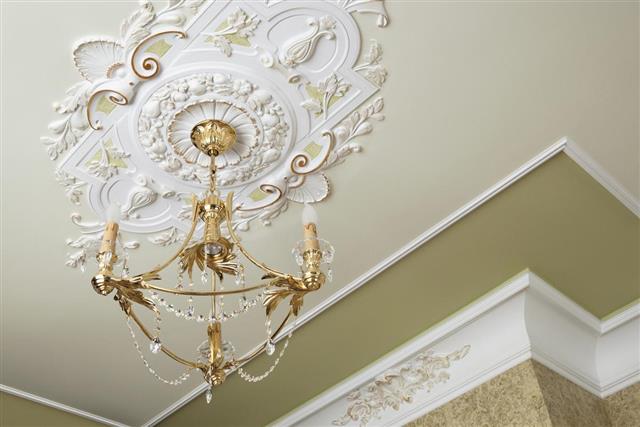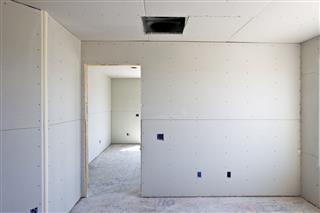
Sagging ceiling tiles is a very common problem observed in old houses. It is a tiring job and requires expertise. Here is a post explaining a do-it-yourself method to fix this problem.
The ceiling is an important aspect contributing to the aesthetic appeal of a room. Installing ceiling tiles is a great way of improving the look of a room. However, if the ceiling is sagging or has watermarks, it hampers the overall look and feel of the room. Apart from being a bad sight to look at, sagging ceiling tiles can be very dangerous for people living in the house. The loose tiles may fall and cause serious injury to someone. It is therefore essential to repair them so as to avert an untoward accident.
The tiles forming the ceiling are usually fixed using the suspended ceiling technique. In this technique, the tiles are suspended using a grid known as furring. Furring is responsible for keeping the tiles in place and as a part of the ceiling, without falling off due to gravity. Ceiling tiles are fixed in the furring using adhesives and staples. A builder interested in saving money by skipping construction steps may simply attach the ceiling tiles to the furring, using glue. Glue fixation is not sufficient to keep tiles in place and results in sagging sooner or later.
It is always better to replace sagging ceiling tiles rather than repairing, because the repaired part will require a replacement in the future. But replacement may not be everybody’s choice, as it can prove to be expensive if the damage is huge. In order to fix a sagging ceiling tile, repairing is a good option. Few steps to fix this problem are described below.
Fixing Sagging Ceiling Tiles
Things Required
● Staples
● Staple gun
● Putty knife
● Adhesion material
Steps to Follow
Look for the Cause
Sagging ceiling tiles are a problem. But the reason behind this problem must be identified before actually addressing the problem. Sagging ceiling develops over time or due to water seepage in the ceiling. Water seepage is the prime cause of this problem and leads to the formation of unsightly marks or spots on the ceiling. Continuous seepage may also cause mold growth, which may loosen the tiles and result in sagging. Once the cause is identified and rectified, the sagging tiles can also be fixed without the fear of future problems.
Detach the Sagging Tiles from the Ceiling
After rectifying the main cause, the second step calls for removal of tiles that are sagging from the ceiling. Identify the area that needs repairing and remove the loosened tiles carefully, without disturbing the properly fixed tiles.
Use Adhesive and Staple for Furring Strips
When tiles are attached to furring, apply ceiling tile adhesive on the tile’s inner surface and the furring using a putty knife. Place the tile onto its furring for adhesion of the two, and use a staple gun to staple the tile onto the furring. Fix all the sagging tiles similarly to get a uniformly repaired ceiling. A plaster ceiling requires glue for attachment of sagging tiles to the ceiling, while furring strips require staples. Use appropriate adhesion material for specific ceiling type.
Check for Ceiling Uniformity
Fixing the sagging tiles may lead to disruption in the uniformity of the ceiling. Use a single technique of fixing the ceiling to maintain uniformity. The plaster of the ceiling can also get removed due to repair work, so it is better to think of an alternative solution to fix this problem if at all it occurs.
Prevent Future Sagging of Ceiling Tiles
It is always better to prevent a damage from happening than actually mending the damage. Make sure there are no water leaks causing harm to the ceiling. Try using furring strips, as staple work is better than adhesive and is long-lasting. You can also go for a naked ceiling if you are ready to spend extra money from your pocket.
There are various tile repair kits available in the market. These kits can be helpful in repairing the unsightly sagging tiles without any professional help. The repairing job can be moderately difficult, but once you are done with it, you will have a neat and tidy ceiling that will be worth your efforts!








